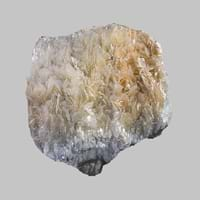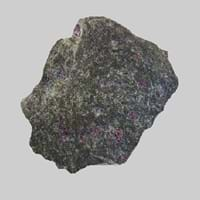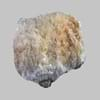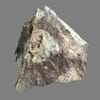Definition
Talc carbonate is nothing but a rock sequence or a mineral composition found in metamorphic ultramafic rocks.
Peridotite is a dense, coarse-grained plutonic is the main constituent of the earth's mantle
Origin
China, USA, Middle east
Pike County, U.S
Discoverer
Unknown
Unknown
Etymology
From medieval Latin, talcum
From French, from peridot + -ite
Class
Metamorphic Rocks
Igneous Rocks
Sub-Class
Durable Rock, Soft Rock
Durable Rock, Medium Hardness Rock
Group
Not Applicable
Plutonic
Other Categories
Fine Grained Rock, Opaque Rock
Coarse Grained Rock, Opaque Rock
Texture
Very Soft
Phaneritic
Color
Colourless, Grey, White
Dark Greenish - Grey
Durability
Durable
Durable
Scratch Resistant
Yes
Yes
Appearance
Soft
Rough and Shiny
Interior Uses
Decorative Aggregates, Interior Decoration
Decorative Aggregates, Interior Decoration
Exterior Uses
Garden Decoration
As Building Stone, As Facing Stone, Garden Decoration
Other Architectural Uses
Powder
Curbing
Construction Industry
Source of calcium
As Dimension Stone, Cobblestones
Medical Industry
Taken as a Supplement for Calcium or Magnesium
Not Yet Used
Antiquity Uses
Artifacts, Jewellery, Monuments, Sculpture, Small Figurines
Monuments, Sculpture, Small Figurines
Commercial Uses
Manufacturing of baby powder
Creating Artwork, Gemstone, Jewelry, Source of Chromite, Platinum, Nickel and Garnet, Source of Diamonds
Types
Not Available
Dunite, Wehrlite, Harzburgite, Lherzolite and Pyrolite
Features
Easily splits into thin plates, Generally rough to touch, Host Rock for Lead
Constitutes upper part of the Earth's mantle, Generally rough to touch, Host rock for Diamond, Is one of the oldest rock
Archaeological Significance
Famous Monuments
Data Not Available
Data Not Available
Famous Sculptures
Data Not Available
Data Not Available
Petroglyphs
Not Used
Used
Formation
Due to change in environmental conditions, rocks are heated and pressurized deep inside the Earth's surface. Talc Carbonate is formed from the extreme heat caused by magma or by the intense collisions and friction of tectonic plates.
Peridotites can be formed in two ways: as mantle rocks formed during the accretion and differentiation of the Earth or as cumulate rocks formed by precipitation of olivine and pyroxenes from basaltic magmas.
Mineral Content
Carbonate, Chlorite, Magnesium
Amphibole, Chromite, Garnet, Magnesium, Olivine, Phlogopite, Plagioclase, Pyroxene
Compound Content
CaO, Carbon Dioxide, MgO
Ca, Fe, Mg, Potassium, Silicon Dioxide, Sodium, Titanium Dioxide
Types of Metamorphism
Burial Metamorphism, Cataclastic Metamorphism, Contact Metamorphism, Hydrothermal Metamorphism, Impact Metamorphism
Burial Metamorphism, Cataclastic Metamorphism, Contact Metamorphism, Hydrothermal Metamorphism, Impact Metamorphism, Regional Metamorphism
Types of Weathering
Not Applicable
Biological Weathering, Chemical Weathering, Mechanical Weathering
Types of Erosion
Not Applicable
Chemical Erosion
Grain Size
Fine Grained
Coarse Grained
Porosity
Less Porous
Less Porous
Cleavage
Perfect
Imperfect
Specific Gravity
2.86
3-3.01
Transparency
Translucent
Translucent to Opaque
Density
2.8-2.9 g/cm3
3.1-3.4 g/cm3
Resistance
Heat Resistant, Wear Resistant
Heat Resistant, Pressure Resistant, Wear Resistant
Deposits in Eastern Continents
Asia
Not Yet Found
China, India, Indonesia, Kazakhstan, Russia, South Korea, Thailand, Turkey
Africa
Ethiopia, Ghana, Western Africa
Morocco, South Africa
Europe
England
Finland, France, Georgia, Germany, Great Britain, Italy, Kazakhstan, Netherlands, Norway, Spain, Switzerland, Venezuela
Others
Not Yet Found
Not Yet Found
Deposits in Western Continents
North America
Canada, USA
Canada, USA
South America
Argentina, Bolivia, Uruguay
Brazil
Deposits in Oceania Continent
Australia
Central Australia, South Australia, Western Australia
New Zealand, Western Australia
Talc carbonate vs Peridotite Characteristics
Though some rocks look identical, they have certain characteristics which distinguish them from others. Characteristics of rocks include texture, appearance, color, fracture, streak, hardness etc. Talc carbonate vs Peridotite characteristics assist us to distinguish and recognize rocks. Also you can check about Properties of Talc carbonate and Properties of Peridotite. Learn more about Talc carbonate vs Peridotite in the next section. The interior uses of Talc carbonate include Decorative aggregates and Interior decoration whereas the interior uses of Peridotite include Decorative aggregates and Interior decoration. Due to some exceptional properties of Talc carbonate and Peridotite, they have various applications in construction industry. The uses of Talc carbonate in construction industry include Source of calcium and that of Peridotite include As dimension stone, Cobblestones.
More about Talc carbonate and Peridotite
Here you can know more about Talc carbonate and Peridotite. The life cycle of a rock consists of formation of rock, composition of rock and transformation of rock. The composition of Talc carbonate and Peridotite consists of mineral content and compound content. The mineral content of Talc carbonate includes Carbonate, Chlorite, Magnesium and mineral content of Peridotite includes Amphibole, Chromite, Garnet, Magnesium, Olivine, Phlogopite, Plagioclase, Pyroxene. You can also check out the list of all Metamorphic Rocks. When we have to compare Talc carbonate vs Peridotite, the texture, color and appearance plays an important role in determining the type of rock. Talc carbonate is available in colourless, grey, white colors whereas, Peridotite is available in dark greenish - grey colors. Appearance of Talc carbonate is Soft and that of Peridotite is Rough and Shiny. Properties of rock is another aspect for Talc carbonate vs Peridotite. The hardness of Talc carbonate is 1-2 and that of Peridotite is 5.5-6. The types of Talc carbonate are Not Available whereas types of Peridotite are Dunite, Wehrlite, Harzburgite, Lherzolite and Pyrolite. Streak of rock is the color of powder produced when it is dragged across an unweathered surface. The streak of Talc carbonate and Peridotite is white. The specific heat capacity of Talc carbonate is 0.92 kJ/Kg K and that of Peridotite is 1.26 kJ/Kg K. Depending on the properties like hardness, toughness, specific heat capacity, porosity etc., rocks are resistant to heat, wear, impact, etc.Talc carbonate is heat resistant, wear resistant whereas Peridotite is heat resistant, pressure resistant, wear resistant.





